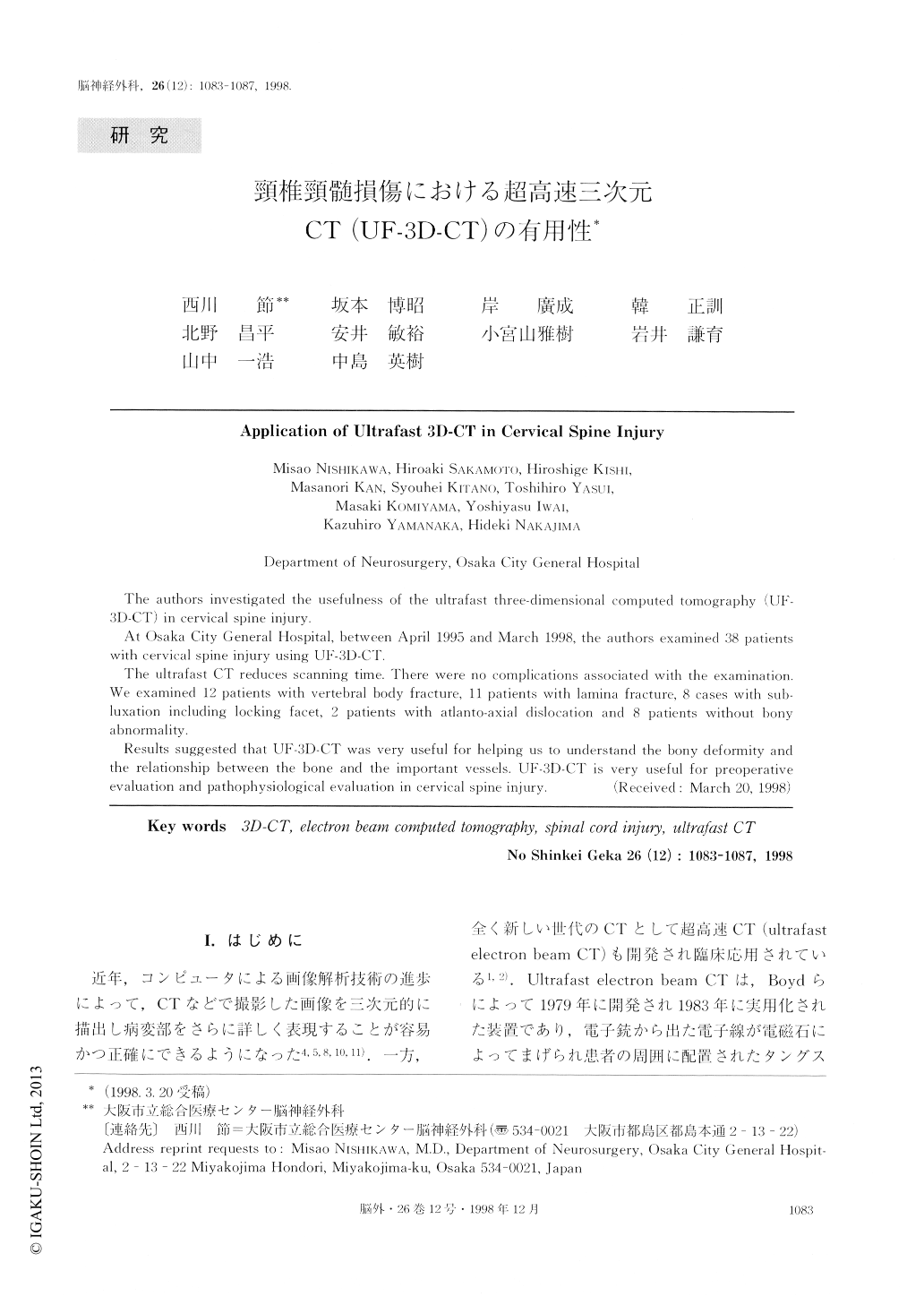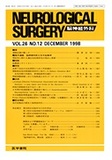Japanese
English
- 有料閲覧
- Abstract 文献概要
- 1ページ目 Look Inside
I.はじめに
近年,コンピュータによる画像解析技術の進歩によって,CTなどで撮影した画像を三次元的に描出し病変部をさらに詳しく表現することが容易かつ正確にできるようになった4,5,8,10,11).一方,全く新しい世代のCTとして超高速CT(ultrafastelectron beam CT)も開発され臨床応用されている1,2).Ultrafast electron beam CTは,Boydらによって1979年に開発され1983年に実用化された装置であり,電子銃から出た電子線が電磁石によってまげられ患者の周囲に配置されたタングステンリングにあたりこれからX線を発生させることにより,撮影を行う装置である(Fig.1)1).したがって機械的に管球を回転させる必要がなく撮影時間が飛躍的に短縮された.
頸椎頸髄損傷は,患者の全身状態が不安定であるとともに,早急に診断をつけて治療計画をたてる必要がある.そこで頸椎頸髄損傷にultrafastdectron beam CTを用いてより早く,そして,コンピューターel画像解析システムを用いて三次元CT画像(UF-3D-CT)を作成することによって正確に診断し,治療に役立てることを試みた.
The authors investigated the usefulness of the ultrafast three-dimensional computed tomography (UF-3D-CT) in cervical spine injury.
At Osaka City General Hospital, between April 1995 and March 1998, the authors examined 38 patientswith cervical spine injury using UF-3D-CT.
The ultrafast CT reduces scanning time. There were no complications associated with the examination.We examined 12 patients with vertebral body fracture, 11 patients with lamina fracture, 8 cases with sub-luxation including locking facet, 2 patients with atlanto-axial dislocation and 8 patients without bonyabnormality.
Results suggested that UF-3D-CT was very useful for helping us to understand the bony deformity andthe relationship between the bone and the important vessels. UF-3D-CT is very useful for preoperativeevaluation and pathophysiological evaluation in cervical spine injury.

Copyright © 1998, Igaku-Shoin Ltd. All rights reserved.


